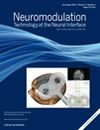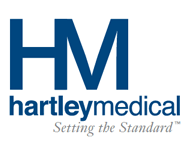
 In the July-August 2012 (Volume 15, Number 4) issue of Neuromodulation:Technology at the Neural Interface, Dr. Robert Levy authored an intriguing article entitled, “The Need for Mechanism-Based Medicine in Neuromodulation.” In this piece, Dr. Levy mentions that the devotion in contemporary medical practices to evidence-based medicine may be causing us to lose sight of the potentially greater importance of mechanism-based medicine. He states that while evidence-based medicine provides meaningful information in the specific clinical setting that the therapy was evaluated, “by understanding the actual mechanisms underlying the diseases and treatments that we administer, we can better address the problems of our individual patients.”[1]
In the July-August 2012 (Volume 15, Number 4) issue of Neuromodulation:Technology at the Neural Interface, Dr. Robert Levy authored an intriguing article entitled, “The Need for Mechanism-Based Medicine in Neuromodulation.” In this piece, Dr. Levy mentions that the devotion in contemporary medical practices to evidence-based medicine may be causing us to lose sight of the potentially greater importance of mechanism-based medicine. He states that while evidence-based medicine provides meaningful information in the specific clinical setting that the therapy was evaluated, “by understanding the actual mechanisms underlying the diseases and treatments that we administer, we can better address the problems of our individual patients.”[1]
Dr. Levy begins by comparing this concept to amateur shooters. They may become proficient at aiming a rifle and hitting a target; however, without understanding the factors that guide the bullet’s trajectory to the target, as well as the potential condition changes, the shooter will fail to hit his mark. What a brilliant analogy to illustrate the importance of understanding mechanism-based medicine. While drugs alone may be able to help manage patient conditions; optimal treatment is ultimately obtained by understanding effective drug delivery methods and systems, and analyzing the forces and interactions that could affect different drugs’ pharmacological effects.
According to Dr. Levy, evidence-based medicine is not enough. He believes that by “mimicking clinical intervention,” we can expect similar outcomes. The problem is that patients differ in their anatomy, physiology, and psychology; therefore, they cannot be treated as a “simple physical variable.”1 Understanding mechanisms of action is vital to effective treatment outcomes as we can respond in real time rather than being subjected to “trial and error” in our neuromodulation treatments.
In the article, Dr. Levy provides discussions of historical examples where a lack in understanding specific drugs’ mechanisms of action, such as aspirin and antibiotics, had initially limited effective use. After understanding these mechanisms of actions, we were able to develop improved safety and efficacy with drug agents and therapies.
According to the doctor, we have seen time and again examples of failures of important neuromodulation trials due to incomplete understanding of the mechanisms underlying potential therapies. This does not mean that we do not need evidence-based medicine. It simply means that it alone is not enough.
The overview I provided above includes only the tip of the iceberg in terms of information and clinical examples that Dr. Levy presents in this expertly crafted article. I strongly urge you to read this, as well as the many other articles included in this most recent issue of Neuromodulation.
To access the journal online, click here.
For more information regarding topics in pain medicine, visit Hartley Medical’s Knowledge Center by clicking here.
[1] Levy, MD, PhD, Robert. “The Need for Mechanism-Based Medicine in Neuromodulation.” Neuromodulation: Technology at the Neural Interface; 15: 273-279.


Leave A Comment